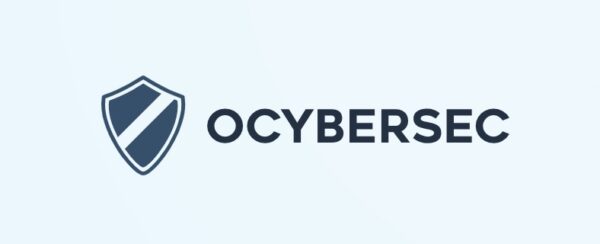CISSP Training
Elevate your cybersecurity career with our comprehensive CISSP Live Online Training! Designed for aspiring and experienced security professionals alike, this immersive program offers real-time instruction from industry experts, interactive sessions, and a dynamic learning environment – all from the convenience of your own home or office
* The live online CISSP training is offered for free for SMB customers with the VCISO service. Please contact us for details
Expert Instructor Guidance and Real-time Interaction:
- Direct Access to Experts: You get to learn from certified and experienced instructors who can provide valuable insights, clarify complex topics, and share real-world scenarios.
- Live Q&A and Discussions: The real-time nature allows you to ask questions immediately and participate in discussions with both the instructor and other students. This fosters a dynamic learning environment similar to a traditional classroom.
- Personalized Feedback: Instructors can often provide personalized feedback on your understanding and areas that need more attention.

Flexibility and Convenience:
Learn from Anywhere:
You can attend sessions from your home, office, or any location with an internet connection.
Reduced Travel Time and Expenses:
This is a significant benefit, especially for professionals with demanding careers and difficult work schedules
Interactive Learning Environment:
Peer-to-Peer Interaction:
Engaging with other students from diverse backgrounds and experiences can enrich the learning experience, offer different perspectives, and create networking opportunities.
Exercises and Test Scenarios:
The live online course incorporates practical exercises and quizzes to help apply the knowledge
Comprehensive Content and Exam Focus
Coverage of All CISSP Domains:
All domains of the CISSP Common Body of Knowledge (CBK) will have in depth coverage
Exam-Focused Approach:
Instructors often focus on key concepts and strategies to help you pass the challenging CISSP exam, including insights into the question style and how to approach them
Why Choose our Online CISSP course
- Expert Instructors, Real-World Insights
- Interactive and Engaging Learning
- Comprehensive and Up-to-Date Curriculum
- Flexible Learning, Uncompromised Quality
- Personalized Support and Guidance
- Focus on Practical Application with real life scenarios
- A Commitment to Your Success

CISSP Common Body of Knowledge (CBK),
The CISSP (Certified Information Systems Security Professional) certification is based on the (ISC)² Common Body of Knowledge (CBK), which is a comprehensive framework covering a wide range of cybersecurity topics. The CISSP CBK is currently divided into eight domains:
Security and Risk Management (16% of exam)
- Understand and apply security concepts (Confidentiality, Integrity, Availability, Authenticity, Non-repudiation)
- Evaluate and apply security governance principles
- Understand legal, regulatory, and compliance issues
- Understand professional ethics
- Develop, document, and implement security policy, standards, procedures, and guidelines
- Understand and apply risk management concepts (threats, vulnerabilities, risk analysis, assessment, response, monitoring)
- Understand and apply threat modeling concepts and methodologies
- Apply Supply Chain Risk Management (SCRM) concepts
- Establish and maintain a security awareness, education, and training program
Asset Security (10% of exam)
- Identify and classify information and assets
- Establish information and asset handling requirements
- Provision resources securely
- Manage data lifecycle
- Ensure appropriate asset retention (e.g., End-of-Life, End-of-Support)
- Determine data security controls and compliance requirements
Security Architecture and Engineering (13% of exam)
- Implement and manage engineering processes using secure design principles
- Understand the fundamental concepts of security models
- Select controls and countermeasures based upon systems security evaluation models
- Understand security capabilities of information systems
- Assess and mitigate the vulnerabilities of security architectures, designs, and solution elements
- Assess and mitigate vulnerabilities in web-based systems, mobile systems, and embedded devices/cyber-physical systems
- Apply cryptography
- Apply security principles to site and facility design
- Implement and manage physical security
Communication and Network Security (13% of exam)
- Apply secure design principles to network architecture
- Secure network components
- Design and establish secure communication channels
- Prevent or mitigate network attacks
Identity and Access Management (IAM) (13% of exam)
- Control physical and logical access to assets
- Manage identification and authentication of people, devices, and services
- Integrate identity as a third-party service
- Implement and manage authorization mechanisms
- Manage the identity and access provisioning lifecycle
- Prevent or mitigate access control attacks
Security Assessment and Testing (12% of exam)
- Design and validate assessment and test strategies
- Conduct security control testing
- Collect security process data (e.g., management and operational controls)
- Analyze and report test outputs
- Conduct or facilitate internal and third-party audits
Security Operations (13% of exam)
- Understand and support investigations
- Understand requirements for investigation types
- Conduct logging and monitoring activities
- Secure the provision of resources
- Understand foundational security operations concepts
- Apply resource protection techniques
- Conduct incident management
- Operate and maintain detective and preventative measures
- Implement and support patch and vulnerability management
- Understand and participate in change management processes
- Implement recovery strategies
- Implement disaster recovery processes
- Participate in business continuity planning and exercises
- Implement and manage physical security operations
- Address personnel safety and security
Software Development Security (10% of exam)
- Understand and apply security in the Software Development Life Cycle (SDLC)
- Enforce security controls in development environments
- Assess the effectiveness of software security
- Assess security impact of acquired software
- Define and apply secure coding guidelines and standards
These domains represent the breadth of knowledge required for a cybersecurity professional responsible for designing, implementing, and managing an organization’s overall information security program. The percentages indicate the approximate weight of each domain on the CISSP exam, which can help candidates prioritize their study effort
